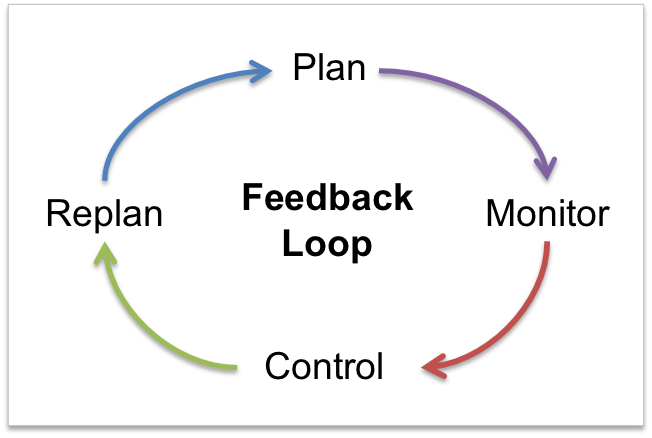Holistic Management for Horse Properties – Part 5
Practical guidelines for management and monitoring your property plans
Published in the Horses & People Magazine & Hoofbeats Magazine
By Mariette van den Berg, BAppSc. (Hons), MSc. (Equine Nutrition)
 In the previous section, we have discussed the process of decision making and the seven tests that assist us with determining if we are making economically, ecologically, and socially sound decisions for our horse properties. This has so far been a theoretical guide; in real life, things may turn out differently.
In the previous section, we have discussed the process of decision making and the seven tests that assist us with determining if we are making economically, ecologically, and socially sound decisions for our horse properties. This has so far been a theoretical guide; in real life, things may turn out differently.
In this section, we highlight some practical guidelines for management to help you better use the tools to manage ecosystem processes on your property. These management guidelines influence any further decisions that you might test because they do, in fact, help to shape those decisions — providing definition and detail that could otherwise be lacking.
Remember, the tools available to us to manage the four ecosystem processes comprise money and labour, human creativity, fire, rest, grazing, animal impact, living organisms, and technology.
Management guidelines
This section provides some insights and ideas based on the practical experience of people applying these tools. Different guidelines apply to different tools or situations.
Learning and Practice (shifting paradigms) relates to human creativity.
Learning how to manage a property holistically is very much a practical exercise. The theory that we highlight in previous sections may help towards understanding the concepts, but it’s only in action that we can see results. Everybody encounters challenges when they change plans and management on a property. Trying new approaches to management on a property that has been managed in a certain way for a long time may feel daunting at first. However, in practice, you will discover what works or what does not. The feedback loop is crucial for monitoring our decisions and the plans that we have made for restoring or improving our horses’ pastures.
Organisation and Leadership (nurturing creativity) relates to human creativity.
Holistic Management is a proactive process in which we attempt to make happen what we want to make happen.1 Our ability as organisers to make a property a better environment for our horses depends largely on how we think, plan, and create. At times, we must be both creative and flexible, changing (feed-back loop) plans to generate a more desirable outcome. If you are running a (horse) business, you may have to review your leadership skills and practices to be able to support creativity in your organisation.
 Marketing (developing a strategy in line with your holistic goal) relates to human creativity.
Marketing (developing a strategy in line with your holistic goal) relates to human creativity.
This guideline applies to those who run a (horse) business, and includes the basic steps to develop a marketing strategy for products or services. If you are starting a business or adding a service or product to your business, you need to develop a product by identifying your customers and meeting their needs, getting the product or services to the customers, promoting your products and services, establishing a price for your products and services, and retaining your customers. In the Holistic Management framework, you must also test your strategy to make sure that it is in line with your holistic goal.
Human creativity is dynamic. Every person uses their own formula that applies best to his or her situation. There is no right or wrong answer. You will have to test your newly developed plans or actions. Then, by using the feedback loop (which we describe in more detail later), you can adjust those plans or actions accordingly to achieve your personal, property, and horse goals.
Now, let’s move on to the guidelines that specifically address the management of land, grazing animals, wildlife, crops, and populations of living organisms.
Time (when to expose and re-expose plants to soils) relates to grazing.
If you own horses (even if you do not have your own property), you are connected to the land and, so, require maximum functioning of all four ecosystem processes. Managing paddocks or pastures is important to safeguard enough foliage for your horses’ dietary needs and to avoid over-grazing, compaction, and all those other problems that we regularly encounter on horse properties.
In previous sections, we highlight the four key insights in Holistic Management. One of these insights is that over-grazing is linked to the time that plants are exposed to animals rather than the number of animals. This insight may go against your current beliefs. What does it mean in simpler terms? If you manage four horses in 5-acre paddocks, have a rotational grazing system of three months, and do not look at how your grasses are responding over time, you actually have a set-stocking situation. In natural systems, herbivorous herds move in large numbers to different foraging areas and only spend a short time there before moving. These areas experience high impact — but only for a short period of time. Holistic Management takes this as a guideline and refers to it as ‘time grazing’ rather than ‘rotational grazing’.[1]
But how do we time the exposure and re-exposure of plants to our horses? There are a number of factors that affect one’s ability to plan the moves of animals and minimise over-grazing. Because of these many variables, a systematic accounting for time is nearly impossible. Grazing animals select different plants and different parts of plants in different seasons. Different plants recover at different rates and the plants on different parts of a tract of land have different growing conditions. So, the best we can do is to monitor the results and modify necessarily. We describe the monitoring of growth rates, recovery periods, and time grazing in the sections dedicated to Holistic Grazing Planning.
Stock density and herd effect (using animals to shape the landscape) relates to animal impact.
Animal impact refers to all of the other activities that grazing animals undertake besides eating, including trampling, dunging, urinating, salivating, and rubbing. Some of these activities are generally considered inconvenient, but can be very important tools for restoring land, especially in brittle environments.
What does animal impact do?
- Hoofed animals tend to compact soil: with every step, they concentrate a large amount of weight on a small foot. Herds of animals can be used to compact roadbeds and earthworks.
- When animals are excited or closely bunched, their trampling causes breaks and irregularities.
- Animals tend to hasten breakdown and reduce the volume of plant material returned to the soil surface through their dung and urine. They also speed the return of uneaten, old plant material to the soil surface through litter that they trample down.
Whether any of these tendencies works for good or ill on the land depends entirely on management, particularly its time factor, not its intrinsic nature. A long-hold belief is that the number of animals is the cause of the problems we experience on our properties and land. In fact, it is time that is the most important factor! When herds of animals are exposed for short periods to the pastures/land, they can actually generate rapid recovery and growth of plants during the resting period. But if the manager set-stocks and does not time the grazing period of animals, grasses can become so damaged that they only recover slowly — or not at all — due to compaction and erosion.
Burning (when and how, and what to do before and after) relates to fire.
Monitoring the soil surface for change helps to determine how frequent a burn should take place. A periodic fire every twenty to fifty years might do good, but a burn every two years, by exposing soil, can lead to tragedy. So, examine the causes and effects before you use fire as a tool to manage your property.
When you manage holistically, the most common justifications for burning include:
- To invigorate or freshen mature or senescent grass plants that animals cannot use for some reason, or to sustain fire-dependent vegetation.
- To invigorate and thicken up bush as cover or feed for wildlife.
- To expose soil in patches to create different communities that can support greater diversity of plants and animals.
- To reduce woody species that are fire sensitive.
- To provide intense disturbance to a community in which many dead plants are hindering growth.
Population management and cropping (look to age structure instead of numbers, diversity instead of single species) relates to living organisms.
The living organisms tool involves all life (plants and animals), and plays a role in the forms of production and the future resource base described in your holistic goals, no matter the type of business or institution that you manage (like your household).
When we nurture crops or domestic animals, we tend to forget that these living organisms are the context of a dynamic community. We assume that the communities they inhibit will adapt and sustain themselves, which is generally not the case. We then hope that technology will enable us to protect our harvest or improve our pastures (chemical pesticides and fertilisers).
It is therefore important understand ecological processes and how they function in order to better comprehend the relationships that exist among the living organisms that populate any biological community.[2,3] This knowledge allows us to concentrate on preventing problems rather than on developing cures, which, in damaging ecosystem processes, only create more problems.
These guidelines help us to work with nature (and humans) more effectively by using the tools to move us towards our holistic goals.
Feedback loop
 Once you create your plan, or implement a decision, you should determine what you will monitor to ensure that the plan is on track or that the decision was the correct one. If you find that you are going off track, you might need to implement some form of control (change what you are doing) to get back on track, or re-plan entirely if things have gone too far.
Once you create your plan, or implement a decision, you should determine what you will monitor to ensure that the plan is on track or that the decision was the correct one. If you find that you are going off track, you might need to implement some form of control (change what you are doing) to get back on track, or re-plan entirely if things have gone too far.
Monitoring is essential to producing the results that we desire, not merely to ‘see what happens’. The feedback loop is a crucial part of creating a responsive plan. People usually make a decision or develop a plan and then hope for the best. If you recognise that creating a feedback loop is actually part of the decision, then you can easily develop a habit of determining monitoring criteria as part of your plan or decision. This practice allows you to easily correct your course at the earliest point rather than waiting until the plan completely derails.
The key is to discern the earliest indicator of change and be sure to complete the feedback loop by controlling or re-planning when things go off track. When your plan or decision concerns the environment, always assume that you are wrong: nature’s complexity is more than we can ever fathom. In monitoring your financial plan, 100% accuracy is never achievable, so monthly control is imperative.
Further reading:
- Savory, A & Butterfield, J. 1999. Holistic Management: A New Framework for Decision Making. 2nd edition, Island Press, Washington, DC.
- Savory, A. 2000. The Ecosystem Processes. In Holistic Management International: Getting Started with Holistic Management. Holistic Management International (HMI), Albuquerque, USA.
- Butterfield, J. 2000. Tools to Manage Ecosystems Processes. In Holistic Management International: Getting Started with Holistic Management. Holistic Management International (HMI), Albuquerque, USA.
© MB Equine Services 2014
www.mbequineservices.com

Follow Us!